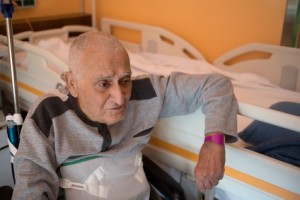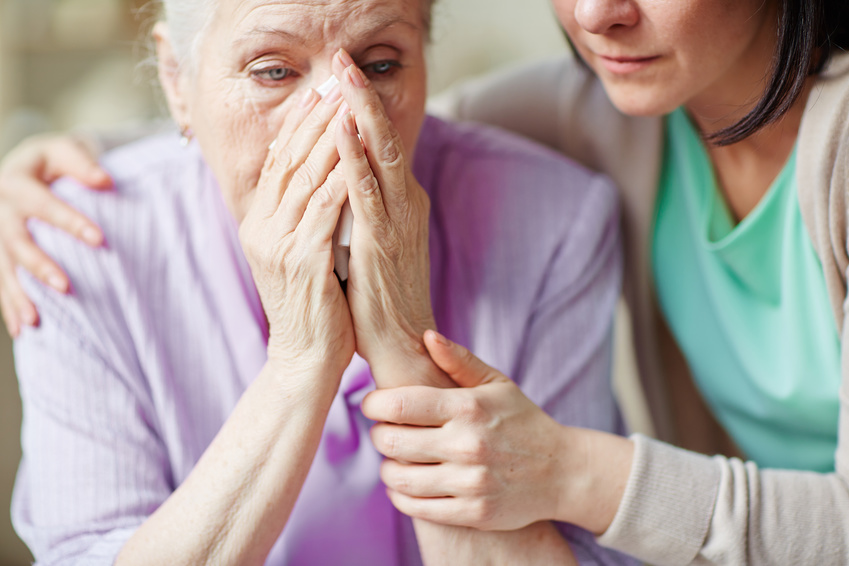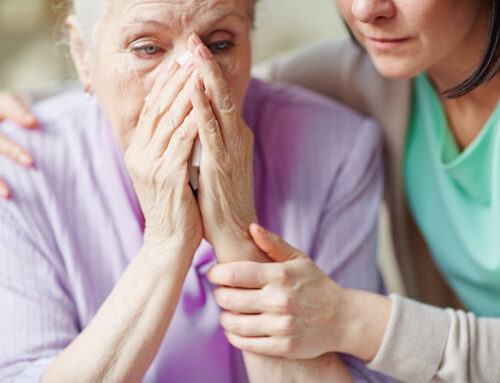After one of my dad’s numerous hospitalizations, he was too weak to return home and was transferred to a nursing home for rehabilitation. The first few weeks went well. My sisters and I checked on him regularly and we were pleased with the care he was receiving. Then, during a routine visit, everything changed. I opened one of his drawers and found dirty undershirts. When I say dirty, I don’t mean I-wore-this-yesterday dirty. I’m talking about soiled-with-food-stains dirty. I opened another drawer and found dingy brown socks that used to be white and had clearly been worn several times. Each of his drawers seemed to be filled with dirty laundry.
When he was admitted to the facility, we opted to have them wash his clothing. We were thrilled that the facility offered this convenience and all they required was that we label his clothing. As members of the sandwich generation with our own children/families, it seemed like a “no-brainer” to allow the facility to take on this task. But at that moment, I was reminded that when something seems too good to be true, it usually is.
I was livid. Why hadn’t they washed his clothing, as they had done for the first few weeks? Why did they think it was ok to put dirty clothing on my dad? Next, I began to feel sad as I processed the indignity of this oversight. Did my dad realize they were not washing his clothes? It was a short hop to my next concern: If they weren’t bothering to wash his clothing, what other needs were not being attended to properly?
This was a subtle but classic example of elder abuse, more specifically, neglect.
According to the National Center on Elder Abuse, there are six major categories of elder mistreatment:
- Physical abuse (causing or threatening to cause bodily harm)
- Emotional abuse (causing psychological distress through verbal or nonverbal acts)
- Sexual abuse (forcing any type of sexual contact or forcing an elder to watch sexual contact)
- Exploitation (misuse of assets, including cash, insurance policies, property, etc.)
- Neglect (refusal or failure to respond to needs, including food, shelter, hygiene, medical care, etc.)
- Abandonment (leaving a vulnerable elder alone without making plans for her care)
The National Institute on Aging describes the common signs of elder abuse as follows:
- Unexplained bruises, burns or scars
- Unkempt appearance
- Bed sores or other preventable conditions
- Difficulty sleeping
- Unexplained weight loss
- Depressed mood or confusion
- Agitation or violent behavior
- Withdrawn demeanor/not interested in normal activities
- Inability to afford basic needs
The main risk factors for elder abuse include social isolation and cognitive impairment. Share on X Elder abuse can be committed by family members, unrelated caregivers, peers, employees of institutions, and strangers. In most cases, the abuser is a family member. It is difficult to know the true prevalence of elder abuse, as it is grossly underreported. Studies estimate that 10% of individuals over the age of 60 are victims of elder abuse, amounting to 5 million victims each year. Share on X
Like other forms of abuse, a key aspect of prevention is education. Be aware of the signs of elder abuse and ensure your loved ones are educated as well. If your loved one is in a hospital or long-term care facility, be sure to visit often. Checking in on your family member regularly is a great way to both prevent abuse and to detect the signs early. If possible, avoid establishing a predictable routine. Instead, show up unexpectedly and at various times throughout the week. Always speak up if you have concerns.

Image credit: Fotolia
If you suspect that an aging individual is being abused, call 911 if they are in immediate life-threatening danger. To report suspected abuse in the community, the police or your local Adult Protective Services Agency (phone numbers are available on http://www.napsa-now.org/get-help/help-in-your-area/ or through the Eldercare Locator, 1-800-677-1116, www.eldercare.gov). To report suspected abuse in a nursing home or long-term care facility, contact your local Long-Term Care Ombudsman (www.ltcombudsman.org or the Eldercare Locator, 1-800-677-1116, www.eldercare.gov.
June 15, 2018 is World Elder Abuse Awareness Day. If you’d like to learn more about elder abuse, here are some additional resources:
Facebook Live with Social Security Administration: How You Can Help Prevent Elder Abuse
Wednesday, June 13, 2018, 7:00 PM ET
www.facebook.com/socialsecurity
National Center on Elder Abuse
Department of Justice Elder Justice Initiative
https://www.justice.gov/elderjustice
Are you a Your GPS Doc subscriber? If not, click here to receive notifications about new blog posts and special offers, as well as useful guides and additional resources exclusive to Your GPS Doc subscribers.








This is an important topic that family caregivers need to be aware of! Thank you for shedding light on this. I would have been livid too had this happened to my parents.
Thank you for reading, Tandy! Elder abuse is a huge problem and one that makes me both sad and angry. Awareness is the first step to prevention.